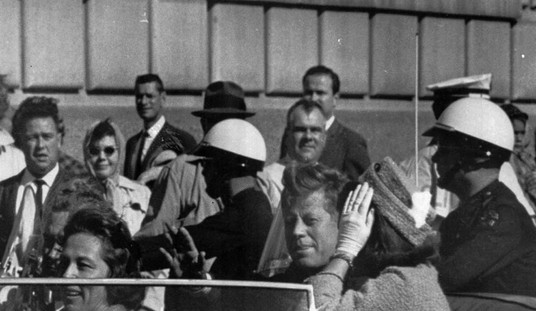Born to a black father and a white mother, I was raised first in the suburbs of Detroit and later in the Twin Cities metro. Immersed in a majority-white culture, I had no shortage of opportunities to be confronted by racism. That said, I can truthfully say that I have seen more genuinely racist expression in the past year than in the previous 36. The progress which emerged from the civil rights era, leading the culture toward Martin Luther King’s dream of a world where people are judged according to the content of their character, has seen a regression toward the darkness of our nation’s past.
The most recent manifestation of this devolution calls itself the “alternative right.” We at PJ Media have recently offered two glimpses into the movement, my declaration that “The Alt-Right Is Evil and Must Be Opposed” and Michael van der Galien’s follow-up “The Mask Comes Off: The Alt-Right Is Racist to Its Core.” Among the varied response has been confusion regarding what the alt-right is and even disbelief that it truly exists.
Here are three analogs we can look to to aid in our understanding of the movement’s nature:
1) The Progressives: New Name, Same Old Leftists
At the height of his influence, Glenn Beck went to great lengths on his Fox News program to educate his viewers about the progressive movement. He drove home that the term “progressive” was just marketing. There was nothing new about the progressives. They were simply rebranded leftists. When the term “liberal” became tainted in the political discourse, it was cast aside in favor of a new term that lacked the negative connotation.
In a similar sense, while the term “alt-right” has only begun to enter the political discourse, the ideas associated with the term have been around for ages. There’s nothing new about tribal identity politics or white nationalism. They found a new name, one which sounds respectable, even trendy. Being “alt-right” is something you can claim without the immediate connotations of “white nationalist.”
2) The Tea Party and Occupy Wall Street
The Obama era has given us two widely known populist movements on both ends of the political spectrum, the Tea Party and Occupy Wall Street. While differing greatly in their core ideology and prescribed solutions, each shared certain characteristics.
Both movements were amorphous, loosely defined, informal, and decentralized. The Tea Party coalesced around the core principles of “fiscal responsibility, constitutionally limited government, and free markets.” Beyond that, individual groups within the movement varied greatly in their focus and tangential issues. The same was true of the Occupy movement, which claimed a diverse array of adherents spanning everything from avowed socialists to Ron Paul libertarians. Occupy’s major gripe was the concentration of economic power among the top 1% of wealth holders.
The alt-right has emerged similar to these previous movements in structure. There is no hierarchy, no central organization, no formal platform. Its self-identified adherents span a vast ideological spectrum from authoritarian to near-anarchist. The uniting principle, if you can call it a principle, is white identity politics. To know what the alt-right stands for, you must learn it in the same way that one learned what the Tea Party and Occupy movements stood for: find self-identified adherents who will tell you.
3) Communist Racialists of the 1960s
In some ways, the civil rights era of the 1960s ended in tragedy. Important strides were made toward empowering minorities with equal political rights and moving the American culture toward greater alignment with its founding values. But there was a dark side. Communist agitators infiltrated the movement and perverted it from one pursuing equality to one seeking to undermine American institutions. Today’s Democratic Party would be unrecognizable to the likes of JFK or LBJ.
In a similar way, the alt-right has begun the process of corrupting and fundamentally transforming the Republican Party. They have leveraged both the aggression of the racialized left and a widespread dissatisfaction with the political establishment to embed themselves parasitically within the party. It is as Michael van der Galien describes:
… These people have nothing to do with conservatism. More precisely, they represent the complete opposite: conservatism is focused on individuals; they are focused on groups or, as they call them, tribes. They’re collectivists, and racist collectivists at that.
Similarly, the communist agitators of the 1960s had nothing to do with liberalism, as anyone familiar with the classical variety knows.
In summary, we’re dealing with an amorphous and decentralized movement of white racialists who have taken on a benign-sounding new name in an effort to market themselves as somehow respectable. They have infiltrated the Republican Party under the cover of anti-incumbency and conservative frustration with the status quo. They cloak their overtly racist ideas in high-sounding language referencing “the American way” or “American culture” — which really just means the white race. Whether Donald Trump has conscientiously appealed to them or not, his candidacy is viewed as a beacon signaling that they may creep from the shadows and stake a claim in the mainstream.
This is a vile movement that must be recognized, removed from the Republican Party through some form of biopsy, and cast back into the dustbin of history from which it escaped. The actual American way requires it.









Join the conversation as a VIP Member